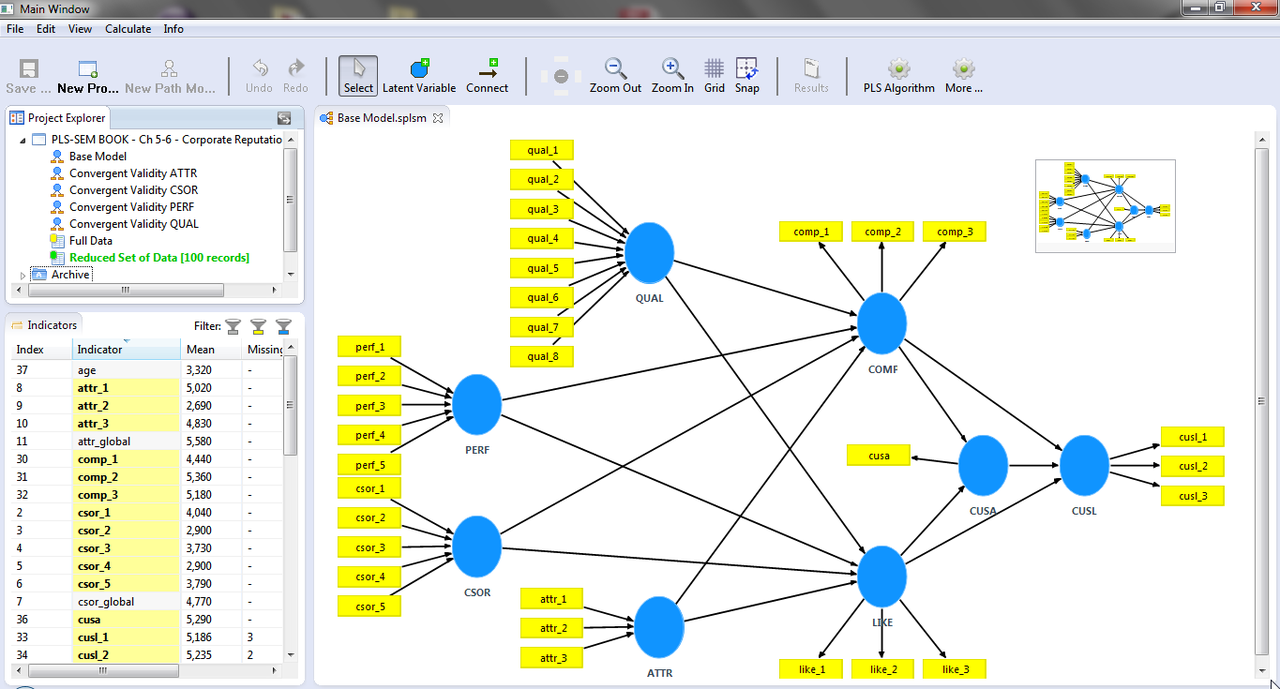Designing Studies with a Grounded Theory Methodology
by Janet Salmons, PhD., Research Community Manager for SAGE Methodspace
Research design is the SAGE Methodspace focus for the first quarter of 2023. Selecting the methodology is an essential piece of research design. Grounded theory is one option, a methodology used for both qualitative and quantitative research.
What is grounded theory?
The SAGE Handbook of Grounded Theory describes it as:
The Grounded Theory Method (GTM) comprises a systematic, inductive, and comparative approach for conducting inquiry for the purpose of constructing theory (Charmaz, 2006; Charmaz & Henwood, 2007). The method is designed to encourage researchers’ persistent interaction with their data, while remaining constantly involved with their emerging analyses. Data collection and analysis proceed simultaneously and each informs and streamlines the other. The GTM builds empirical checks into the analytic process and leads researchers to examine all possible theoretical explanations for their empirical findings. The iterative process of moving back and forth between empirical data and emerging analysis makes the collected data progressively more focused and the analysis successively more theoretical.
While a number of schools of thought exist, a couple of points from this definition are consistently associated with GT:
Purpose of constructing theory. This is a methodology used to generate, examine, and/or test theoretical constructs. New or updated theory is grounded in the data.
Data collection and analysis proceed simultaneously. It is an iterative, not a linear research process. A variety of collection and analytic approaches can be used, and GT offers flexible guidelines that fit the purpose of theory-development.
The multidisciplinary collection of open-access articles listed below offers a variety of perspectives on grounded theory. You will notice that some names appear more than once on this list; Glaser, Charmaz, Birks and Mills are respected methodologists important to the development of GT.
Bryant, A., & Charmaz, K. (2007). The SAGE handbook of grounded theory. SAGE Publications Ltd, https://doi.org/10.4135/9781848607941
What can we learn from grounded theory methodologists?
Birks, M., Hoare, K., & Mills, J. (2019). Grounded Theory: The FAQs. International Journal of Qualitative Methods, 18. https://doi.org/10.1177/1609406919882535
Abstract. Since being developed as a research methodology in the 1960s, grounded theory (GT) has grown in popularity. In spite of its prevalence, considerable confusion surrounds GT, particularly in respect of the essential methods that characterize this approach to research. Misinformation is evident in the literature around issues such as the various approaches to GT, how long the process takes, the role of literature and preconceptions, generating and using data and strategies to produce theory. This article examines the most frequently asked questions about GT in an effort to demystify its purpose and use. Understanding the fundamental concepts of GT is critical to the correct use and application of GT methods and the ultimate production of theory that is grounded in data. More significantly, this understanding can prevent researchers encountering common pitfalls that can impede the process and impact the products of research.
Chamberlain-Salaun, J., Mills, J., & Usher, K. (2013). Linking Symbolic Interactionism and Grounded Theory Methods in a Research Design:From Corbin and Strauss’ Assumptions to Action. SAGE Open, 3(3), 2158244013505757. https://doi.org/10.1177/2158244013505757
Abstract. This article focuses on Corbin and Strauss’ evolved version of grounded theory. In the third edition of their seminal text, Basics of Qualitative Research: Techniques and Procedures for Developing Grounded Theory, the authors present 16 assumptions that underpin their conception of grounded theory methodology. The assumptions stem from a symbolic interactionism perspective of social life, including the themes of meaning, action and interaction, self and perspectives. As research design incorporates both methodology and methods, the authors aim to expose the linkages between the 16 assumptions and essential grounded theory methods, highlighting the application of the latter in light of the former. Analyzing the links between symbolic interactionism and essential grounded theory methods provides novice researchers and researchers new to grounded theory with a foundation from which to design an evolved grounded theory research study.
Charmaz, K. (2017). Special Invited Paper: Continuities, Contradictions, and Critical Inquiry in Grounded Theory. International Journal of Qualitative Methods, 16(1). https://doi.org/10.1177/1609406917719350
Abstract. What continuities and contradictions can qualitative researchers discern among versions of the grounded theory method? How do contradictions within the method affect research practice? How do new versions of grounded theory advance research practice and critical inquiry? To answer these questions, this keynote address begins with a brief overview of grounded theory for those who are unfamiliar with the method and subsequently discusses the continuities and contradictions between versions of the method. Constructivist grounded theory (CGT) uses the methodological strategies of the original version but builds on its pragmatist heritage, shifts its epistemological foundations, and resolves contradictions in earlier versions of the method. The result means placing grounded theory in the social constructionist tradition, viewing data as co-constructed with research participants, puncturing deeply held methodological preconceptions, and subsequently fostering a heightened methodological self-consciousness. The practice of CGT assists researchers in interrogating their data, nascent analyses, research actions, and themselves each step along the way. Subsequently, researchers can gain awareness of the pervasiveness of Anglo-North American worldviews throughout inquiry. CGT not only aids theorizing and defining and developing emergent critical questions during the research process but also brings power into purview.
Chun Tie Y, Birks M, Francis K. Grounded theory research: A design framework for novice researchers. SAGE Open Medicine. 2019;7. doi:10.1177/2050312118822927
Abstract. Grounded theory is a well-known methodology employed in many research studies. Qualitative and quantitative data generation techniques can be used in a grounded theory study. Grounded theory sets out to discover or construct theory from data, systematically obtained and analysed using comparative analysis. While grounded theory is inherently flexible, it is a complex methodology. Thus, novice researchers strive to understand the discourse and the practical application of grounded theory concepts and processes.
Glaser, B. G. (2002). Conceptualization: On Theory and Theorizing Using Grounded Theory. International Journal of Qualitative Methods, 1(2), 23–38. https://doi.org/10.1177/160940690200100203
Abstract. This article explores the use of grounded theory to generate conceptualizations of emergent social patterns in research data. The naming of patterns and their abstraction across time, place and people, are discussed. The constant comparative method employed in grounded data analysis is offered as a developmental tool for enhancing researchers' abilities to conceptualize and form emergent theories. Conceptual levels, descriptions, power and flawed approaches to analysis are explored at length.
Goldkuhl, G., & Cronholm, S. (2010). Adding Theoretical Grounding to Grounded Theory: Toward Multi-Grounded Theory. International Journal of Qualitative Methods, 9(2), 187–205. https://doi.org/10.1177/160940691000900205
Abstract. The purpose of this paper is to challenge some of the cornerstones of the grounded theory approach and propose an extended and alternative approach for data analysis and theory development, which the authors call multi-grounded theory (MGT). A multi-grounded theory is not only empirically grounded; it is also grounded in other ways. Three different grounding processes are acknowledged: theoretical, empirical, and internal grounding. The authors go beyond the pure inductivist approach in GT and add the explicit use of external theories. A working procedure of theory development in MGT is presented, which can be seen as an extension of the grounded theory approach.
Mills, J., Bonner, A., & Francis, K. (2006). The Development of Constructivist Grounded Theory. International Journal of Qualitative Methods, 5(1), 25–35. https://doi.org/10.1177/160940690600500103
Abstract. Constructivist grounded theory is a popular method for research studies primarily in the disciplines of psychology, education, and nursing. In this article, the authors aim to locate the roots of constructivist grounded theory and then trace its development. They examine key grounded theory texts to discern their ontological and epistemological orientation. They find Strauss and Corbin's texts on grounded theory to possess a discernable thread of constructivism in their approach to inquiry. They also discuss Charmaz's landmark work on constructivist grounded theory relative to her positioning of the researcher in relation to the participants, analysis of the data, and rendering of participants' experiences into grounded theory. Grounded theory can be seen as a methodological spiral that begins with Glaser and Strauss' original text and continues today. The variety of epistemological positions that grounded theorists adopt are located at various points on this spiral and are reflective of their underlying ontologies.
Ralph, N., Birks, M., & Chapman, Y. (2015). The Methodological Dynamism of Grounded Theory. International Journal of Qualitative Methods, 14(4). https://doi.org/10.1177/1609406915611576
Abstract. Variations in grounded theory (GT) interpretation are the subject of ongoing debate. Divergences of opinion, genres, approaches, methodologies, and methods exist, resulting in disagreement on what GT methodology is and how it comes to be. From the postpositivism of Glaser and Strauss, to the symbolic interactionist roots of Strauss and Corbin, through to the constructivism of Charmaz, the field of GT methodology is distinctive in the sense that those using it offer new ontological, epistemological, and methodological perspectives at specific moments in time. We explore the unusual dynamism attached to GT’s underpinnings. Our view is that through a process of symbolic interactionism, in which generations of researchers interact with their context, moments are formed and philosophical perspectives are interpreted in a manner congruent with GT’s essential methods. We call this methodological dynamism, a process characterized by contextual awareness and moment formation, contemporaneous translation, generational methodology, and methodological consumerism.
Redman-MacLaren, M., & Mills, J. (2015). Transformational Grounded Theory: Theory, Voice, and Action. International Journal of Qualitative Methods, 14(3), 1–12. https://doi.org/10.1177/160940691501400301
Abstract. Grounded theory has been evolving methodologically since Barney Glaser and Anselm Strauss first described it in the late 1960s. Initially underpinned by modernist philosophy, grounded theory has had recent turns including the adoption of both constructivism and postmodernism. This article explores ontological offerings of critical realism as a basis for transformational grounded theory informed by participatory action research and decolonizing research methodologies. The potential for both theory and action to result from this critical grounded theory methodology, which promotes greater participation and equity of power for positive change, is the transformational in transformational grounded theory.
Seaman, J. (2008). Adopting a Grounded Theory Approach to Cultural-Historical Research: Conflicting Methodologies or Complementary Methods? International Journal of Qualitative Methods, 7(1), 1-17. https://doi.org/10.1177/160940690800700101
Abstract. Grounded theory has long been regarded as a valuable way to conduct social and educational research. However, recent constructivist and postmodern insights are challenging long-standing assumptions, most notably by suggesting that grounded theory can be flexibly integrated with existing theories. This move hinges on repositioning grounded theory from a methodology with positivist underpinnings to an approach that can be used within different theoretical frameworks. In this article the author reviews this recent transformation of grounded theory, engages in the project of repositioning it as an approach by using cultural historical activity theory as a test case, and outlines several practical methods implied by the joint use of grounded theory as an approach and activity theory as a methodology. One implication is the adoption of a dialectic, as opposed to a constructivist or objectivist, stance toward grounded theory inquiry, a stance that helps move past the problem of emergence versus forcing.
Timonen, V., Foley, G., & Conlon, C. (2018). Challenges When Using Grounded Theory: A Pragmatic Introduction to Doing GT Research. International Journal of Qualitative Methods, 17(1), 1609406918758086. https://doi.org/10.1177/1609406918758086
Abstract. The grounded theory (GT) method is widely applied, yet frequently misunderstood. We outline the main variants of GT and dispel the most common myths associated with GT. We argue that the different variants of GT incorporate a core set of shared procedures that can be put to work by any researcher or team from their chosen ontological and epistemological perspective. This “shared core” of the GT method is articulated as the principles of (1) taking the word “grounded” seriously, (2) capturing and explaining context-related social processes, (3) pursuing theory through engagement with data, and (4) pursuing theory through theoretical sampling. In this article, we have put forward, in a nutshell, a distillation of core principles underpinning existing GT approaches that can aid further engagement with the different variants of GT. We are motivated by the wish to make GT more comprehensible and accessible, especially for researchers who are new to the method.




























Do you think about research questions as an insider, outsider, or somewhere in between? Why is positionality important in online research?